| 1. |
Ruting Zhang, Chuanmin Chen, Songtao Liu, et al. Study on the emission reduction effect of emergency management and control measures in Tangshan city, Hebei province, China. Air Quality, Atmosphere & Health, 2025.
DOI:10.1007/s11869-025-01772-x
|
| 2. |
Lilai Song, Zhen Li, Jinqiu Zhang, et al. An hourly and localized optimization method for soil fugitive dust emission inventory based on machine learning. Journal of Environmental Sciences, 2025, 158: 1.
DOI:10.1016/j.jes.2024.12.016
|
| 3. |
Xinyan Wang, Linxiao Zhu, Yueting Hao, et al. Impacts of aerosol meteorological feedback on China's yield potential of soybean. Meteorological Applications, 2024, 31(2)
DOI:10.1002/met.2198
|
| 4. |
Xiuzhen Chen, Qingqing He, Tong Ye, et al. Decoding spatiotemporal dynamics in atmospheric CO2 in Chinese cities: Insights from satellite remote sensing and geographically and temporally weighted regression analysis. Science of The Total Environment, 2024, 908: 167917.
DOI:10.1016/j.scitotenv.2023.167917
|
| 5. |
Yuqing Zhang, Tianliang Zhao, Xiaoyun Sun, et al. Ozone pollution aggravated by mountain-valley breeze over the western Sichuan Basin, Southwest China. Chemosphere, 2024, 361: 142445.
DOI:10.1016/j.chemosphere.2024.142445
|
| 6. |
王俊博 Wang Junbo, 王筱晔 Wang Xiaoye, 任超 Ren Chao, et al. 基于多普勒激光雷达的青岛地区大气物质边界层高度反演与分析. Acta Optica Sinica, 2024, 44(6): 0601005.
DOI:10.3788/AOS230794
|
|
| 7. |
Xun Zhang, Lijie Wu, Xiansheng Liu, et al. New particle formation event detection with convolutional neural networks. Atmospheric Environment, 2024, 327: 120487.
DOI:10.1016/j.atmosenv.2024.120487
|
| 8. |
Jung-Woo Yoo, Soon-Young Park, Wonbae Jeon, et al. Understanding the physical mechanisms of PM2.5 formation in Seoul, Korea: assessing the role of aerosol direct effects using the WRF-CMAQ model. Air Quality, Atmosphere & Health, 2024.
DOI:10.1007/s11869-024-01538-x
|
| 9. |
Xiaoyun Sun, Tianliang Zhao, Jun Hu, et al. Inverse effects of aerosol radiative forcing on heavy PM2.5 pollution of local accumulation and regional transport over Central China. Science of The Total Environment, 2024, 917: 170319.
DOI:10.1016/j.scitotenv.2024.170319
|
| 10. |
Jiayuan Lu, Xiaojing Shen, Qianli Ma, et al. Size-resolved effective density of ambient aerosols measured by an AAC–SMPS tandem system in Beijing. Atmospheric Environment, 2024, 318: 120226.
DOI:10.1016/j.atmosenv.2023.120226
|
| 11. |
Wenjie Zhang, Hong Wang, Xiaoye Zhang, et al. The impact of aerosol-cloud interaction on mesoscale numerical weather prediction when low-cloud and haze coexist in winter over major polluted regions of China. Atmospheric Environment, 2024, 319: 120270.
DOI:10.1016/j.atmosenv.2023.120270
|
| 12. |
Tian Zhang, Renhe Zhang, Junting Zhong, et al. The vertical pollution structure reflected by aerosol optical properties in Beijing and its relation with meteorological conditions in the autumn and winter of 2017–2020. Atmospheric Environment, 2023, 308: 119870.
DOI:10.1016/j.atmosenv.2023.119870
|
| 13. |
Lei Liu, Yu Shi, Zhe Zhang, et al. Variability of turbulence dispersion characteristics during heavy haze process: A case study in Beijing. Journal of Environmental Sciences, 2023, 124: 440.
DOI:10.1016/j.jes.2021.10.034
|
| 14. |
Jialing Wang, Lingyan Wu, Junying Sun, et al. Characteristics of PM2.5 and secondary inorganic pollution formation during the heating season of 2021 in Beijing. Frontiers in Environmental Science, 2023, 10
DOI:10.3389/fenvs.2022.1028468
|
| 15. |
Zhanyong Wang, Ruhui Cao, Bai Li, et al. Characterizing nighttime vertical profiles of atmospheric particulate matter and ozone in a megacity of south China using unmanned aerial vehicle measurements. Environmental Research, 2023, 236: 116854.
DOI:10.1016/j.envres.2023.116854
|
| 16. |
Lin Shen, Jiaoshi Zhang, Yin Cheng, et al. Characterization of the vertical evolution of urban nocturnal boundary layer by UAV measurements: Insights into relations to cloud radiative effect. Environmental Research, 2023, 232: 116323.
DOI:10.1016/j.envres.2023.116323
|
| 17. |
S. P. Gautam, A. Silwal, B. Baral, et al. Influence of the rainfall and temperature oscillation on air quality in Kathmandu valley: The wavelet analysis. Environmental Engineering Research, 2023, 28(6): 220694.
DOI:10.4491/eer.2022.694
|
| 18. |
倩惠 李, 宏昇 张, 小曳 张, et al. 华北平原霾污染天气大气边界层空间结构综合观测——COATS实验. SCIENTIA SINICA Terrae, 2023, 53(5): 928.
DOI:10.1360/SSTe-2022-0310
|
|
| 19. |
Tian Zhang, Renhe Zhang, Junting Zhong, et al. Classification and estimation of unfavourable boundary-layer meteorological conditions in Beijing for PM2.5 concentration changes using vertical meteorological profiles. Atmospheric Research, 2023, 293: 106902.
DOI:10.1016/j.atmosres.2023.106902
|
| 20. |
Wei Wei, Hongsheng Zhang, Xiaoye Zhang, et al. Low-level jets and their implications on air pollution: A review. Frontiers in Environmental Science, 2023, 10
DOI:10.3389/fenvs.2022.1082623
|
| 21. |
Min Shao, Xiaoying Xu, Yutong Lu, et al. Spatio-temporally differentiated impacts of temperature inversion on surface PM2.5 in eastern China. Science of The Total Environment, 2023, 855: 158785.
DOI:10.1016/j.scitotenv.2022.158785
|
| 22. |
Yue Peng, Hong Wang, Xiaoye Zhang, et al. Superimposed effects of typical local circulations driven by mountainous topography and aerosol–radiation interaction on heavy haze in the Beijing–Tianjin–Hebei central and southern plains in winter. Atmospheric Chemistry and Physics, 2023, 23(14): 8325.
DOI:10.5194/acp-23-8325-2023
|
| 23. |
Qianhui Li, Hongsheng Zhang, Xiaoye Zhang, et al. COATS: Comprehensive observation on the atmospheric boundary layer three-dimensional structure during haze pollution in the North China Plain. Science China Earth Sciences, 2023, 66(5): 939.
DOI:10.1007/s11430-022-1092-y
|
| 24. |
Zhuozhi Shu, Tianliang Zhao, Yubao Liu, et al. Impact of deep basin terrain on PM2.5 distribution and its seasonality over the Sichuan Basin, Southwest China. Environmental Pollution, 2022, 300: 118944.
DOI:10.1016/j.envpol.2022.118944
|
| 25. |
Xuefang Wu, Tuan V. Vu, Roy M. Harrison, et al. Long-term characterization of roadside air pollutants in urban Beijing and associated public health implications. Environmental Research, 2022, 212: 113277.
DOI:10.1016/j.envres.2022.113277
|
| 26. |
Yuanxin Liang, Huizheng Che, Hong Wang, et al. Aerosols Direct Radiative Effects Combined Ground-Based Lidar and Sun-Photometer Observations: Cases Comparison between Haze and Dust Events in Beijing. Remote Sensing, 2022, 14(2): 266.
DOI:10.3390/rs14020266
|
| 27. |
Lihui Lv, Tianshu Zhang, Yan Xiang, et al. Distribution and transport characteristics of fine particulate matter in beijing with mobile lidar measurements from 2015 to 2018. Journal of Environmental Sciences, 2022, 115: 65.
DOI:10.1016/j.jes.2021.06.013
|
| 28. |
Deying Wang, Jizhi Wang, Yuanqin Yang, et al. Study on the Precursor Signal Capturing of Unfavorable Weather: Months/Years in Advance to Ultra-Early Forecast for Hourly Transient Weather Changes during the Beijing Winter Olympics. Advances in Meteorology, 2022, 2022: 1.
DOI:10.1155/2022/1409229
|
| 29. |
Jiejun Zhang, Pengfei Liu, Hongquan Song, et al. Multi-Scale Effects of Meteorological Conditions and Anthropogenic Emissions on PM2.5 Concentrations over Major Cities of the Yellow River Basin. International Journal of Environmental Research and Public Health, 2022, 19(22): 15060.
DOI:10.3390/ijerph192215060
|
| 30. |
Heido Trofimov, Piia Post, Edward Gryspeerdt, et al. Meteorological Conditions Favorable for Strong Anthropogenic Aerosol Impacts on Clouds. Journal of Geophysical Research: Atmospheres, 2022, 127(4)
DOI:10.1029/2021JD035871
|
| 31. |
Wenjie Zhang, Hong Wang, Xiaoye Zhang, et al. The Different Impacts of Emissions and Meteorology on PM2.5 Changes in Various Regions in China: A Case Study. Atmosphere, 2022, 13(2): 222.
DOI:10.3390/atmos13020222
|
| 32. |
Ziyue Chen, Miaoqing Xu, Bingbo Gao, et al. Causation inference in complicated atmospheric environment. Environmental Pollution, 2022, 303: 119057.
DOI:10.1016/j.envpol.2022.119057
|
| 33. |
Meeta Cesler‐Maloney, William R. Simpson, Tate Miles, et al. Differences in Ozone and Particulate Matter Between Ground Level and 20 m Aloft are Frequent During Wintertime Surface‐Based Temperature Inversions in Fairbanks, Alaska. Journal of Geophysical Research: Atmospheres, 2022, 127(10)
DOI:10.1029/2021JD036215
|
| 34. |
Haichuan Long, Qiying Chen, Xi Gong, et al. Evaluation of the Planetary Boundary Layer Height in China Predicted by the CMA-GFS Global Model. Atmosphere, 2022, 13(5): 845.
DOI:10.3390/atmos13050845
|
| 35. |
Bijay Sharma, Shiguo Jia, Anurag J. Polana, et al. Seasonal variations in aerosol acidity and its driving factors in the eastern Indo-Gangetic Plain: A quantitative analysis. Chemosphere, 2022, 305: 135490.
DOI:10.1016/j.chemosphere.2022.135490
|
| 36. |
Yue Zhou, Jianping Guo, Tianliang Zhao, et al. Roles of Atmospheric Turbulence and Stratification in a Regional Pollution Transport Event in the Middle Reaches of the Yangtze River. Earth and Space Science, 2022, 9(1)
DOI:10.1029/2021EA002062
|
| 37. |
Wenjie Zhang, Xiaoye Zhang, Hong Wang. The Role of Aerosol‐Radiation Interaction in the Meteorology Prediction at the Weather Scale in the Numerical Weather Prediction Model. Geophysical Research Letters, 2022, 49(9)
DOI:10.1029/2021GL097026
|
| 38. |
Zhongcheng Zhang, Bo Xu, Weiman Xu, et al. Machine learning combined with the PMF model reveal the synergistic effects of sources and meteorological factors on PM2.5 pollution. Environmental Research, 2022, 212: 113322.
DOI:10.1016/j.envres.2022.113322
|
| 39. |
Junting Zhong, Xiaoye Zhang, Ke Gui, et al. Reconstructing 6-hourly PM2.5 datasets from 1960 to 2020 in China. Earth System Science Data, 2022, 14(7): 3197.
DOI:10.5194/essd-14-3197-2022
|
| 40. |
Mei Mei, Yihui Ding, Zunya Wang, et al. Effects of the East Asian subtropical westerly jet on winter persistent heavy pollution in the Beijing–Tianjin–Hebei region. International Journal of Climatology, 2022, 42(5): 2950.
DOI:10.1002/joc.7400
|
| 41. |
Lingyan Wu, Xiaoye Zhang, Junying Sun, et al. Intensified wintertime secondary inorganic aerosol formation during heavy haze pollution episodes (HPEs) in Beijing, China. Journal of Environmental Sciences, 2022, 114: 503.
DOI:10.1016/j.jes.2022.01.008
|
| 42. |
Qianqian Huang, Yiqi Chu, Qianhui Li. Climatology of low-level temperature inversions over China based on high-resolution radiosonde measurements. Theoretical and Applied Climatology, 2021, 144(1-2): 415.
DOI:10.1007/s00704-021-03536-w
|
| 43. |
Zhe Zhang, Yu Shi, Haijion Sun, et al. Positive and negative turbulent heat diffusivity observed on a 325-m meteorological tower in Beijing 基于北京325米气象塔观测的正, 负湍流热扩散系数. Atmospheric and Oceanic Science Letters, 2021, 14(1): 100009.
DOI:10.1016/j.aosl.2020.100009
|
|
| 44. |
Jianbo Yang, Min Shao. Impacts of Extreme Air Pollution Meteorology on Air Quality in China. Journal of Geophysical Research: Atmospheres, 2021, 126(7)
DOI:10.1029/2020JD033210
|
| 45. |
Tongqiang Liu, Qianshan He, Yonghang Chen, et al. Distinct impacts of humidity profiles on physical properties and secondary formation of aerosols in Shanghai. Atmospheric Environment, 2021, 267: 118756.
DOI:10.1016/j.atmosenv.2021.118756
|
| 46. |
Yushan Song, Ying Li, Haoxiang Xu, et al. A Multi‐Dimensional Decomposition Method of the Meteorology‐Driven and Emission‐Driven Effects on Year‐to‐Year Air Quality Variations. Earth and Space Science, 2021, 8(6)
DOI:10.1029/2020EA001424
|
| 47. |
Yan Xiang, Tianshu Zhang, Chaoqun Ma, et al. Lidar vertical observation network and data assimilation reveal key processes driving the 3-D dynamic evolution of PM2.5 concentrations over the North China Plain. Atmospheric Chemistry and Physics, 2021, 21(9): 7023.
DOI:10.5194/acp-21-7023-2021
|
| 48. |
A. Ibrahim Muntasir, Curci Gabriele, I. Habbani Farouk, et al. Association of Air Pollution Levels to Atmospheric Weather Regimes over Europe. Journal of Environmental Science and Pollution Research, 2021, 7(1): 442.
DOI:10.30799/jespr.210.21070101
|
| 49. |
Wenxing Jia, Xiaoye Zhang, Yaqiang Wang. Assessing the pollutant evolution mechanisms of heavy pollution episodes in the Yangtze-Huaihe valley: A multiscale perspective. Atmospheric Environment, 2021, 244: 117986.
DOI:10.1016/j.atmosenv.2020.117986
|
| 50. |
Sihui Fan, Chloe Y. Gao, Linlin Wang, et al. Elucidating roles of near-surface vertical layer structure in different stages of PM2.5 pollution episodes over urban Beijing during 2004–2016. Atmospheric Environment, 2021, 246: 118157.
DOI:10.1016/j.atmosenv.2020.118157
|
| 51. |
Junting Zhong, Xiaoye Zhang, Ke Gui, et al. Robust prediction of hourly PM2.5 from meteorological data using LightGBM. National Science Review, 2021, 8(10)
DOI:10.1093/nsr/nwaa307
|
| 52. |
Xiaojing Shen, Junying Sun, Xiaoye Zhang, et al. A novel method of retrieving low visibility during heavily polluted episodes in the North China plain. Atmospheric Environment: X, 2021, 9: 100101.
DOI:10.1016/j.aeaoa.2021.100101
|
| 53. |
Junting Zhong, Xiaoye Zhang, Yangmei Zhang, et al. Drivers of the rapid rise and daily-based accumulation in PM1. Science of The Total Environment, 2021, 760: 143394.
DOI:10.1016/j.scitotenv.2020.143394
|
| 54. |
Yang Liu, Tingzhen Ming, Chong Peng, et al. Mitigating air pollution strategies based on solar chimneys. Solar Energy, 2021, 218: 11.
DOI:10.1016/j.solener.2021.02.021
|
| 55. |
玉强 宋. Long-Term Evolution and Characteristics of Extreme Air Pollution Meteorological Events in China. Climate Change Research Letters, 2021, 10(05): 538.
DOI:10.12677/CCRL.2021.105064
|
|
| 56. |
Jun Hu, Tianliang Zhao, Jane Liu, et al. Nocturnal surface radiation cooling modulated by cloud cover change reinforces PM2.5 accumulation: Observational study of heavy air pollution in the Sichuan Basin, Southwest China. Science of The Total Environment, 2021, 794: 148624.
DOI:10.1016/j.scitotenv.2021.148624
|
| 57. |
Longyi Shao, Jie Li, Mengyuan Zhang, et al. Morphology, composition and mixing state of individual airborne particles: Effects of the 2017 Action Plan in Beijing, China. Journal of Cleaner Production, 2021, 329: 129748.
DOI:10.1016/j.jclepro.2021.129748
|
| 58. |
Wenxing Jia, Xiaoye Zhang, Jizhi Wang, et al. The influence of stagnant and transport types weather on heavy pollution in the Yangtze-Huaihe valley, China. Science of The Total Environment, 2021, 792: 148393.
DOI:10.1016/j.scitotenv.2021.148393
|
| 59. |
Dandan Zhao, Jinyuan Xin, Chongshui Gong, et al. The impact threshold of the aerosol radiative forcing on the boundary layer structure in the pollution region. Atmospheric Chemistry and Physics, 2021, 21(7): 5739.
DOI:10.5194/acp-21-5739-2021
|
| 60. |
María Eugenia Fernández, Jorge Osvaldo Gentili, Alicia María Campo. Air Pollutants in an Intermediate City: Variability and Interactions with Weather and Anthropogenic Elements in Bahía Blanca, Argentina. Environmental Processes, 2021, 8(1): 349.
DOI:10.1007/s40710-021-00502-6
|
| 61. |
Junting Zhong, Xiaoye Zhang, Yaqiang Wang, et al. Attribution of the worse aerosol pollution in March 2018 in Beijing to meteorological variability. Atmospheric Research, 2021, 250: 105294.
DOI:10.1016/j.atmosres.2020.105294
|
| 62. |
Tian Zhang, Huizheng Che, Zhiqiang Gong, et al. The dominant mechanism of the explosive rise of PM2.5 after significant pollution emissions reduction in Beijing from 2017 to the COVID-19 pandemic in 2020. Atmospheric Pollution Research, 2021, 12(2): 272.
DOI:10.1016/j.apr.2020.11.008
|
| 63. |
Zhaoyang Meng, Lingyan Wu, Xiangde Xu, et al. Changes in ammonia and its effects on PM2.5 chemical property in three winter seasons in Beijing, China. Science of The Total Environment, 2020, 749: 142208.
DOI:10.1016/j.scitotenv.2020.142208
|
| 64. |
Wei Wei, Hongsheng Zhang, Xuhui Cai, et al. Influence of Intermittent Turbulence on Air Pollution and Its Dispersion in Winter 2016/2017 over Beijing, China. Journal of Meteorological Research, 2020, 34(1): 176.
DOI:10.1007/s13351-020-9128-4
|
| 65. |
Shiguang Miao, Weimei Jiang, Ping Liang, et al. Advances in Urban Meteorological Research in China. Journal of Meteorological Research, 2020, 34(2): 218.
DOI:10.1007/s13351-020-9858-3
|
| 66. |
Pengcheng Qi, Yan Cui, Haijun Zhang, et al. Evaluating Multivariable Statistical Methods for Downscaling Nighttime Land Surface Temperature in Urban Areas. IEEE Access, 2020, 8: 162085.
DOI:10.1109/ACCESS.2020.3021034
|
| 67. |
Wenqian Zhang, Shengrui Tong, Chenhui Jia, et al. Different HONO Sources for Three Layers at the Urban Area of Beijing. Environmental Science & Technology, 2020, 54(20): 12870.
DOI:10.1021/acs.est.0c02146
|
| 68. |
Wenjie Zhang, Hong Wang, Xiaoye Zhang, et al. Evaluating the contributions of changed meteorological conditions and emission to substantial reductions of PM2.5 concentration from winter 2016 to 2017 in Central and Eastern China. Science of The Total Environment, 2020, 716: 136892.
DOI:10.1016/j.scitotenv.2020.136892
|
| 69. |
Ju Li, Zhaobin Sun, Donald H. Lenschow, et al. A foehn-induced haze front in Beijing: observations and implications. Atmospheric Chemistry and Physics, 2020, 20(24): 15793.
DOI:10.5194/acp-20-15793-2020
|
| 70. |
Yang Chen, Guangming Shi, Jing Cai, et al. Simultaneous measurements of urban and rural particles in Beijing – Part 2: Case studies of haze events and regional transport. Atmospheric Chemistry and Physics, 2020, 20(15): 9249.
DOI:10.5194/acp-20-9249-2020
|
| 71. |
Xiaorui Chen, Haichao Wang, Keding Lu, et al. Field Determination of Nitrate Formation Pathway in Winter Beijing. Environmental Science & Technology, 2020, 54(15): 9243.
DOI:10.1021/acs.est.0c00972
|
| 72. |
Linlin Wang, Sihui Fan, Fei Hu, et al. Vertical Gradient Variations in Radiation Budget and Heat Fluxes in the Urban Boundary Layer: A Comparison Study Between Polluted and Clean Air Episodes in Beijing During Winter. Journal of Geophysical Research: Atmospheres, 2020, 125(14)
DOI:10.1029/2020JD032478
|
| 73. |
Yucong Miao, Huizheng Che, Xiaoye Zhang, et al. Integrated impacts of synoptic forcing and aerosol radiative effect on boundary layer and pollution in the Beijing–Tianjin–Hebei region, China. Atmospheric Chemistry and Physics, 2020, 20(10): 5899.
DOI:10.5194/acp-20-5899-2020
|
| 74. |
Dandan Zhao, Guangjing Liu, Jinyuan Xin, et al. Haze pollution under a high atmospheric oxidization capacity in summer in Beijing: insights into formation mechanism of atmospheric physicochemical processes. Atmospheric Chemistry and Physics, 2020, 20(8): 4575.
DOI:10.5194/acp-20-4575-2020
|
| 75. |
Hongsheng Zhang, Xiaoye Zhang, Qianhui Li, et al. Research Progress on Estimation of the Atmospheric Boundary Layer Height. Journal of Meteorological Research, 2020, 34(3): 482.
DOI:10.1007/s13351-020-9910-3
|
| 76. |
Wenxing Jia, Xiaoye Zhang. The role of the planetary boundary layer parameterization schemes on the meteorological and aerosol pollution simulations: A review. Atmospheric Research, 2020, 239: 104890.
DOI:10.1016/j.atmosres.2020.104890
|
| 77. |
Seung-Hee Eun, Sung-Min Park, Byung-Gon Kim, et al. Observational Analysis of Aerosol–Meteorology Interactions for the Severe Haze Episode in Korea. Atmosphere, 2020, 12(1): 33.
DOI:10.3390/atmos12010033
|
| 78. |
Tingyu Yang, Yu Wang, Yanan Wu, et al. Effect of the wetland environment on particulate matter and dry deposition. Environmental Technology, 2020, 41(8): 1054.
DOI:10.1080/09593330.2018.1520307
|
| 79. |
Wenjun Qu, Xiaoye Zhang, Yaqiang Wang, et al. Atmospheric visibility variation over global land surface during 1973–2012: Influence of meteorological factors and effect of aerosol, cloud on ABL evolution. Atmospheric Pollution Research, 2020, 11(4): 730.
DOI:10.1016/j.apr.2020.01.002
|
| 80. |
Yangmei Zhang, Tuan Van Vu, Junying Sun, et al. Significant Changes in Chemistry of Fine Particles in Wintertime Beijing from 2007 to 2017: Impact of Clean Air Actions. Environmental Science & Technology, 2020, 54(3): 1344.
DOI:10.1021/acs.est.9b04678
|
| 81. |
Lingyan Wu, Yu Wang, Lei Li, et al. Acidity and inorganic ion formation in PM2.5 based on continuous online observations in a South China megacity. Atmospheric Pollution Research, 2020, 11(8): 1339.
DOI:10.1016/j.apr.2020.05.003
|
| 82. |
T.F. Eck, B.N. Holben, J. Kim, et al. Influence of cloud, fog, and high relative humidity during pollution transport events in South Korea: Aerosol properties and PM2.5 variability. Atmospheric Environment, 2020, 232: 117530.
DOI:10.1016/j.atmosenv.2020.117530
|
| 83. |
Tian Zhang, Huizheng Che, Zhiqiang Gong, et al. The two-way feedback effect between aerosol pollution and planetary boundary layer structure on the explosive rise of PM2.5 after the “Ten Statements of Atmosphere” in Beijing. Science of The Total Environment, 2020, 709: 136259.
DOI:10.1016/j.scitotenv.2019.136259
|
| 84. |
Ziyue Chen, Danlu Chen, Chuanfeng Zhao, et al. Influence of meteorological conditions on PM2.5 concentrations across China: A review of methodology and mechanism. Environment International, 2020, 139: 105558.
DOI:10.1016/j.envint.2020.105558
|
| 85. |
Wenjie Zhang, Xiaoye Zhang, Junting Zhong, et al. The effects of the “two-way feedback mechanism” on the maintenance of persistent heavy aerosol pollution over areas with relatively light aerosol pollution in northwest China. Science of The Total Environment, 2019, 688: 642.
DOI:10.1016/j.scitotenv.2019.06.295
|
| 86. |
Yan Ren, Hongsheng Zhang, Wei Wei, et al. A study on atmospheric turbulence structure and intermittency during heavy haze pollution in the Beijing area. Science China Earth Sciences, 2019, 62(12): 2058.
DOI:10.1007/s11430-019-9451-0
|
| 87. |
X.J. Shen, J.Y. Sun, X.Y. Zhang, et al. Variations in submicron aerosol liquid water content and the contribution of chemical components during heavy aerosol pollution episodes in winter in Beijing. Science of The Total Environment, 2019, 693: 133521.
DOI:10.1016/j.scitotenv.2019.07.327
|
| 88. |
Hong Wang, Jianghao Li, Yue Peng, et al. The impacts of the meteorology features on PM2.5 levels during a severe haze episode in central-east China. Atmospheric Environment, 2019, 197: 177.
DOI:10.1016/j.atmosenv.2018.10.001
|
| 89. |
Linlin Wang, Hong Wang, Junkai Liu, et al. Impacts of the near-surface urban boundary layer structure on PM2.5 concentrations in Beijing during winter. Science of The Total Environment, 2019, 669: 493.
DOI:10.1016/j.scitotenv.2019.03.097
|
| 90. |
Junting Zhong, Xiaoye Zhang, Yaqiang Wang, et al. The two-way feedback mechanism between unfavorable meteorological conditions and cumulative aerosol pollution in various haze regions of China. Atmospheric Chemistry and Physics, 2019, 19(5): 3287.
DOI:10.5194/acp-19-3287-2019
|
| 91. |
Liangke Liu, Xiaoye Zhang, Junting Zhong, et al. The ‘two-way feedback mechanism’ between unfavorable meteorological conditions and cumulative PM2.5 mass existing in polluted areas south of Beijing. Atmospheric Environment, 2019, 208: 1.
DOI:10.1016/j.atmosenv.2019.02.050
|
| 92. |
Ansheng Chen, Q. Xiaosheng, O. Amahmid. Analysis of meteorological factors on different stages of heavy haze pollution in Beijing, 2019. E3S Web of Conferences, 2019, 117: 00018.
DOI:10.1051/e3sconf/201911700018
|
| 93. |
Can Xia, Junying Sun, Xuefei Qi, et al. Observational study of aerosol hygroscopic growth on scattering coefficient in Beijing: A case study in March of 2018. Science of The Total Environment, 2019, 685: 239.
DOI:10.1016/j.scitotenv.2019.05.283
|
| 94. |
Junting Zhong, Xiaoye Zhang, Yaqiang Wang. Reflections on the threshold for PM<sub>2.5</sub> explosive growth in the cumulative stage of winter heavy aerosol pollution episodes (HPEs) in Beijing. Tellus B: Chemical and Physical Meteorology, 2019, 71(1): 1528134.
DOI:10.1080/16000889.2018.1528134
|
| 95. |
Dandan Zhao, Jinyuan Xin, Chongshui Gong, et al. The formation mechanism of air pollution episodes in Beijing city: Insights into the measured feedback between aerosol radiative forcing and the atmospheric boundary layer stability. Science of The Total Environment, 2019, 692: 371.
DOI:10.1016/j.scitotenv.2019.07.255
|
| 96. |
Linlin Wang, Junkai Liu, Zhiqiu Gao, et al. Vertical observations of the atmospheric boundary layer structure over Beijing urban area during air pollution episodes. Atmospheric Chemistry and Physics, 2019, 19(10): 6949.
DOI:10.5194/acp-19-6949-2019
|
| 97. |
Junting Zhong, Xiaoye Zhang, Yaqiang Wang. Relatively weak meteorological feedback effect on PM2.5 mass change in Winter 2017/18 in the Beijing area: Observational evidence and machine-learning estimations. Science of The Total Environment, 2019, 664: 140.
DOI:10.1016/j.scitotenv.2019.01.420
|
| 98. |
Lingyan Wu, Junying Sun, Xiaoye Zhang, et al. Aqueous-phase reactions occurred in the PM<sub>2.5</sub> cumulative explosive growth during the heavy pollution episode (HPE) in 2016 Beijing wintertime. Tellus B: Chemical and Physical Meteorology, 2019, 71(1): 1620079.
DOI:10.1080/16000889.2019.1620079
|
| 99. |
Yan Ren, Hongsheng Zhang, Wei Wei, et al. Effects of turbulence structure and urbanization on the heavy haze pollution process. Atmospheric Chemistry and Physics, 2019, 19(2): 1041.
DOI:10.5194/acp-19-1041-2019
|
| 100. |
Yucong Miao, Jing Li, Shiguang Miao, et al. Interaction Between Planetary Boundary Layer and PM2.5 Pollution in Megacities in China: a Review. Current Pollution Reports, 2019, 5(4): 261.
DOI:10.1007/s40726-019-00124-5
|
| 101. |
Yan Ren, Hongsheng Zhang, Wei Wei, et al. Comparison of the turbulence structure during light and heavy haze pollution episodes. Atmospheric Research, 2019, 230: 104645.
DOI:10.1016/j.atmosres.2019.104645
|
| 102. |
Weiqi Xu, Yele Sun, Qingqing Wang, et al. Changes in Aerosol Chemistry From 2014 to 2016 in Winter in Beijing: Insights From High‐Resolution Aerosol Mass Spectrometry. Journal of Geophysical Research: Atmospheres, 2019, 124(2): 1132.
DOI:10.1029/2018JD029245
|
| 103. |
Zirui Liu, Bo Hu, Dongsheng Ji, et al. Characteristics of fine particle explosive growth events in Beijing, China: Seasonal variation, chemical evolution pattern and formation mechanism. Science of The Total Environment, 2019, 687: 1073.
DOI:10.1016/j.scitotenv.2019.06.068
|
| 104. |
Renmin Yuan, Xiaoye Zhang, Hao Liu, et al. Aerosol vertical mass flux measurements during heavy aerosol pollution episodes at a rural site and an urban site in the Beijing area of the North China Plain. Atmospheric Chemistry and Physics, 2019, 19(20): 12857.
DOI:10.5194/acp-19-12857-2019
|
| 105. |
Xiaoye Zhang, Xiangde Xu, Yihui Ding, et al. The impact of meteorological changes from 2013 to 2017 on PM2.5 mass reduction in key regions in China. Science China Earth Sciences, 2019, 62(12): 1885.
DOI:10.1007/s11430-019-9343-3
|
| 106. |
Ziyue Chen, Danlu Chen, Wei Wen, et al. Evaluating the “2+26” regional strategy for air quality improvement during two air pollution alerts in Beijing: variations in PM2.5 concentrations, source apportionment, and the relative contribution of local emission and regional transport. Atmospheric Chemistry and Physics, 2019, 19(10): 6879.
DOI:10.5194/acp-19-6879-2019
|
| 107. |
Keding Lu, Hendrik Fuchs, Andreas Hofzumahaus, et al. Fast Photochemistry in Wintertime Haze: Consequences for Pollution Mitigation Strategies. Environmental Science & Technology, 2019, 53(18): 10676.
DOI:10.1021/acs.est.9b02422
|
| 108. |
Jizhi Wang, Xiaoye Zhang, Duo Li, et al. Interdecadal changes of summer aerosol pollution in the Yangtze River Basin of China, the relative influence of meteorological conditions and the relation to climate change. Science of The Total Environment, 2018, 630: 46.
DOI:10.1016/j.scitotenv.2018.01.236
|
| 109. |
Xiaoye Zhang, Junting Zhong, Jizhi Wang, et al. The interdecadal worsening of weather conditions affecting aerosol pollution in the Beijing area in relation to climate warming. Atmospheric Chemistry and Physics, 2018, 18(8): 5991.
DOI:10.5194/acp-18-5991-2018
|
| 110. |
Ju Li, Jielun Sun, Mingyu Zhou, et al. Observational analyses of dramatic developments of a severe air pollution event in the Beijing area. Atmospheric Chemistry and Physics, 2018, 18(6): 3919.
DOI:10.5194/acp-18-3919-2018
|
| 111. |
Wei Wei, Hongsheng Zhang, Bingui Wu, et al. Intermittent turbulence contributes to vertical dispersion of PM2.5 in the North China Plain: cases from Tianjin. Atmospheric Chemistry and Physics, 2018, 18(17): 12953.
DOI:10.5194/acp-18-12953-2018
|
| 112. |
Panyang Shao, Hezhong Tian, Yujiao Sun, et al. Characterizing remarkable changes of severe haze events and chemical compositions in multi-size airborne particles (PM1, PM2.5 and PM10) from January 2013 to 2016–2017 winter in Beijing, China. Atmospheric Environment, 2018, 189: 133.
DOI:10.1016/j.atmosenv.2018.06.038
|
| 113. |
Hong Wang, Yue Peng, Xiaoye Zhang, et al. Contributions to the explosive growth of PM2.5 mass due to aerosol–radiation feedback and decrease in turbulent diffusion during a red alert heavy haze in Beijing–Tianjin–Hebei, China. Atmospheric Chemistry and Physics, 2018, 18(23): 17717.
DOI:10.5194/acp-18-17717-2018
|
| 114. |
Junting Zhong, Xiaoye Zhang, Yaqiang Wang, et al. Heavy aerosol pollution episodes in winter Beijing enhanced by radiative cooling effects of aerosols. Atmospheric Research, 2018, 209: 59.
DOI:10.1016/j.atmosres.2018.03.011
|
| 115. |
Fenhua Ma, Zhaoyong Guan. Seasonal Variations of Aerosol Optical Depth over East China and India in Relationship to the Asian Monsoon Circulation. Journal of Meteorological Research, 2018, 32(4): 648.
DOI:10.1007/s13351-018-7171-1
|
| 116. |
Xiaojing Shen, Junying Sun, Xiaoye Zhang, et al. Comparison of Submicron Particles at a Rural and an Urban Site in the North China Plain during the December 2016 Heavy Pollution Episodes. Journal of Meteorological Research, 2018, 32(1): 26.
DOI:10.1007/s13351-018-7060-7
|
| 117. |
Chunhong Zhou, Xiaojing Shen, Zirui Liu, et al. Simulating Aerosol Size Distribution and Mass Concentration with Simultaneous Nucleation, Condensation/Coagulation, and Deposition with the GRAPES–CUACE. Journal of Meteorological Research, 2018, 32(2): 265.
DOI:10.1007/s13351-018-7116-8
|
| 118. |
X. Wang, X.J. Shen, J.Y. Sun, et al. Size-resolved hygroscopic behavior of atmospheric aerosols during heavy aerosol pollution episodes in Beijing in December 2016. Atmospheric Environment, 2018, 194: 188.
DOI:10.1016/j.atmosenv.2018.09.041
|
| 119. |
Haichao Wang, Keding Lu, Xiaorui Chen, et al. Fast particulate nitrate formation via N2O5 uptake aloft in winter in Beijing. Atmospheric Chemistry and Physics, 2018, 18(14): 10483.
DOI:10.5194/acp-18-10483-2018
|
| 120. |
Xiang Zheng, Jun Qin, Shengwen Liang, et al. The Development of Boundary Layer Structure Index (BLSI) and Its Relationship with Ground Air Quality. Atmosphere, 2018, 10(1): 3.
DOI:10.3390/atmos10010003
|
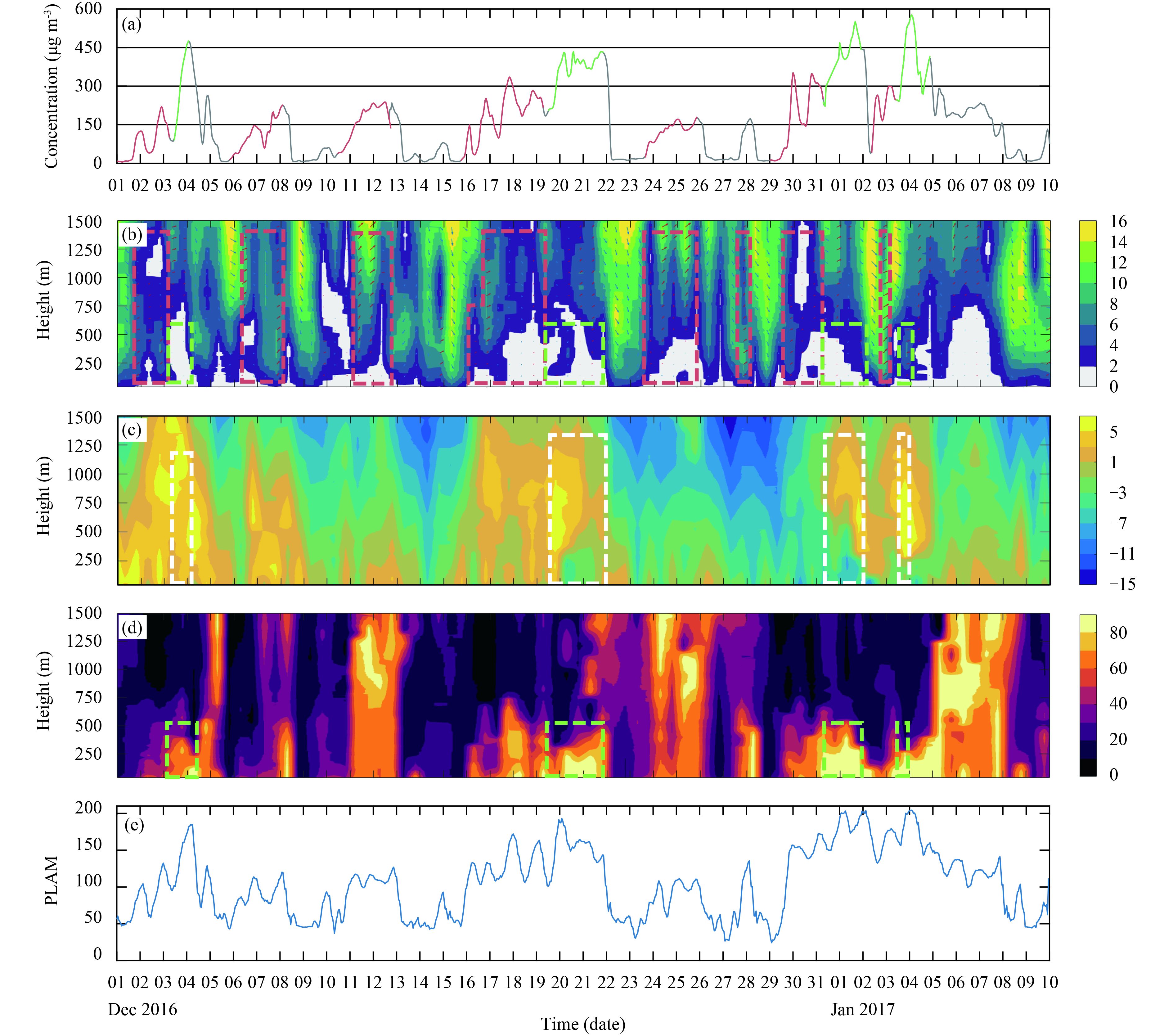






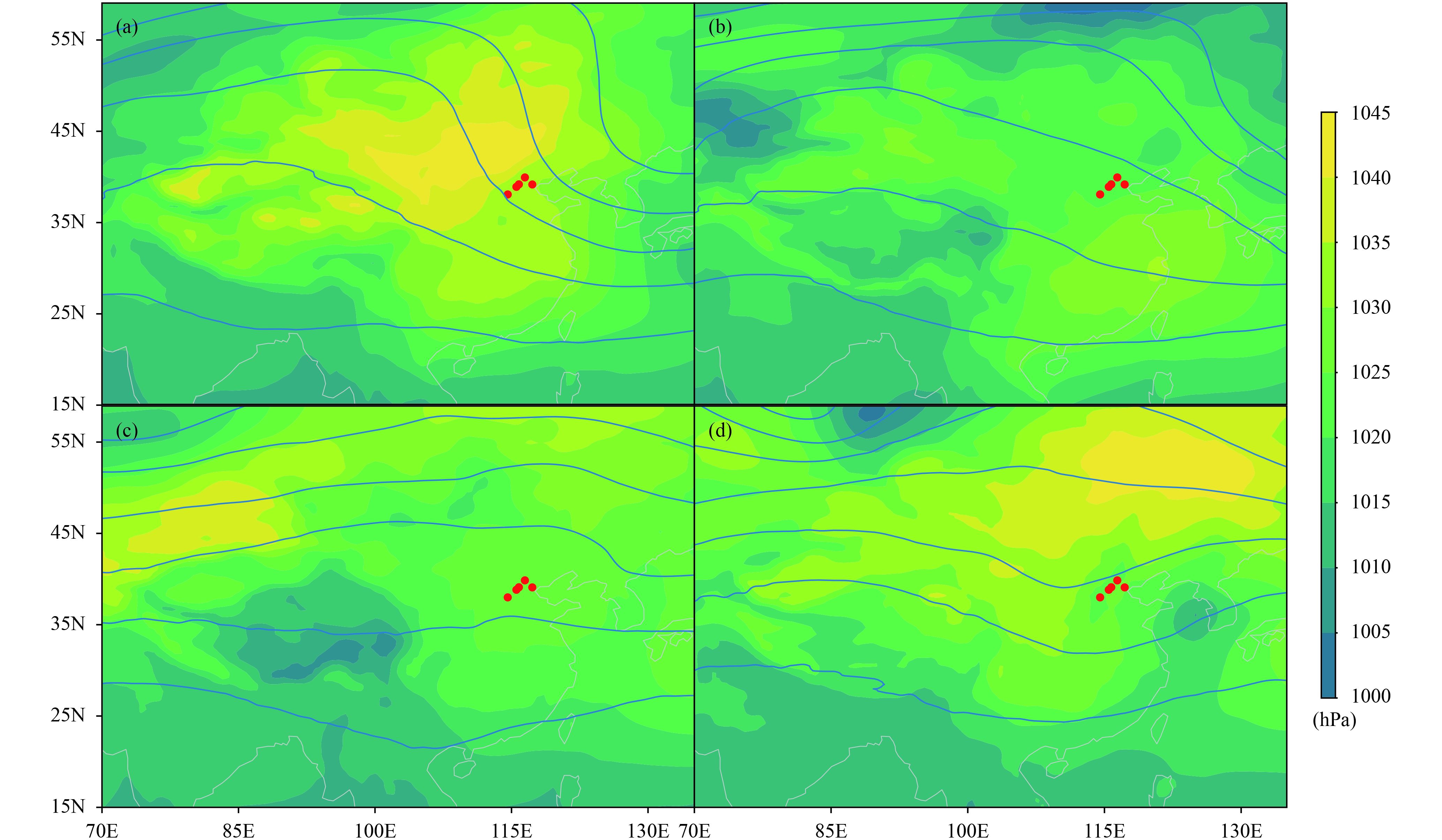
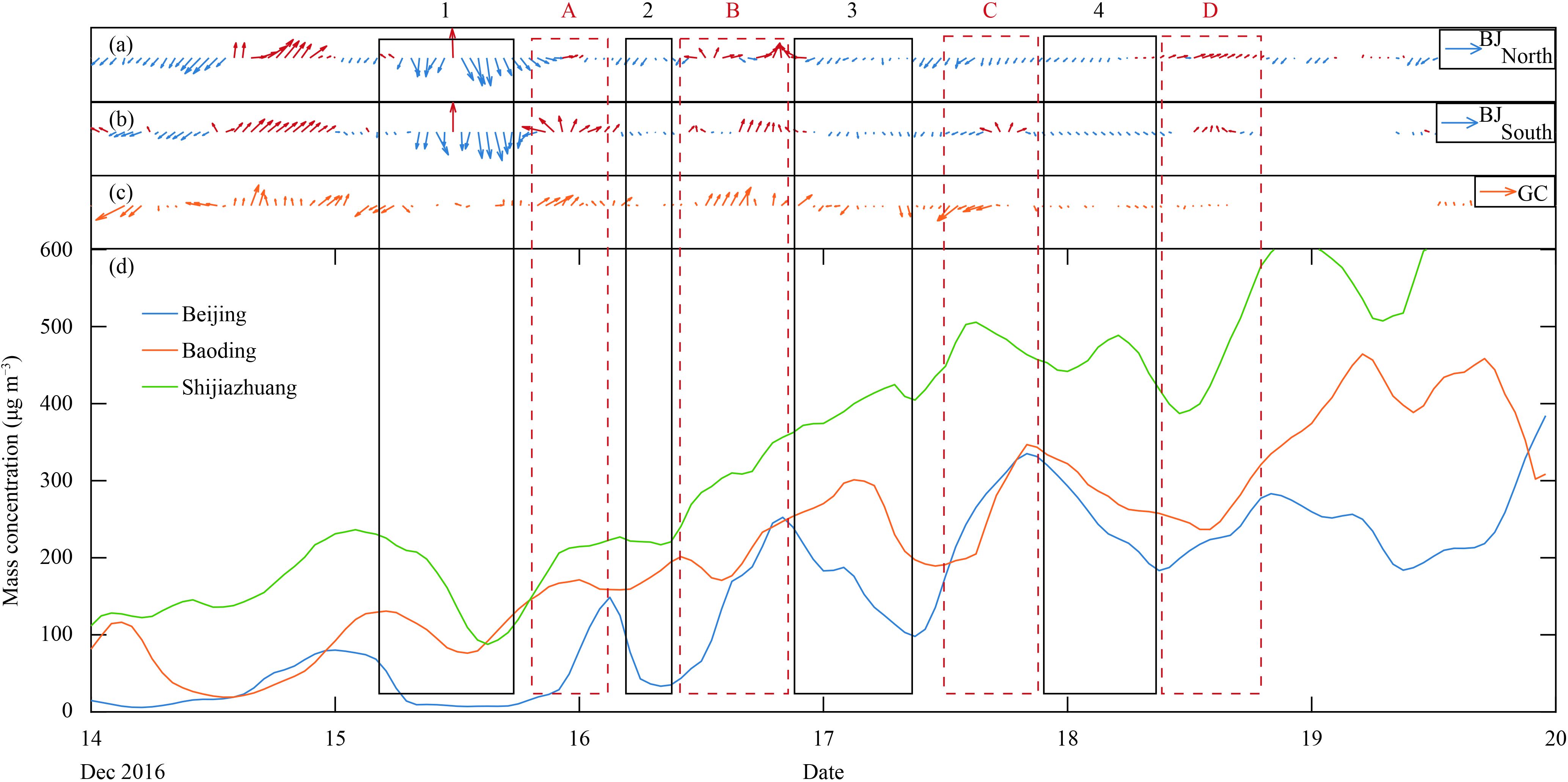
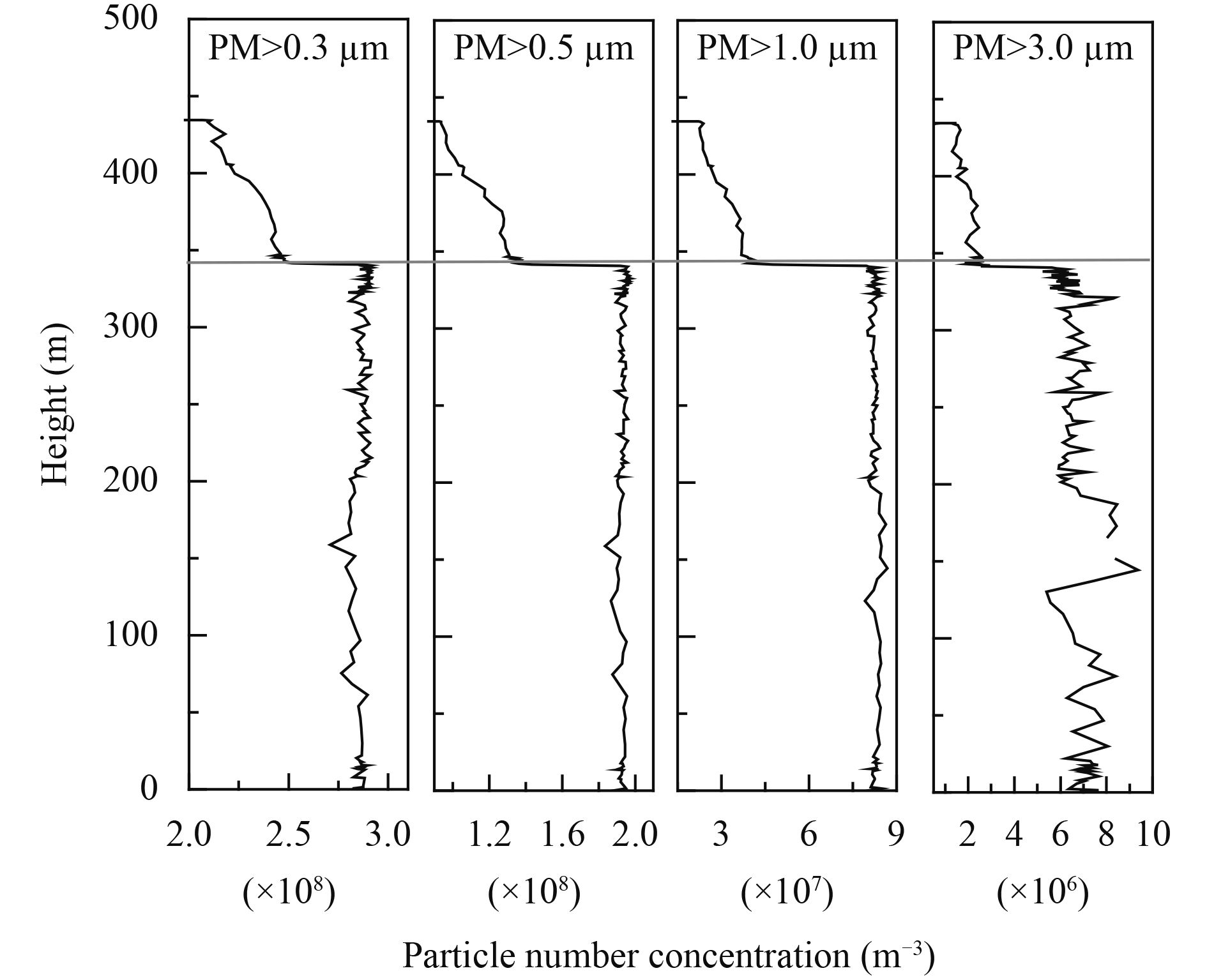
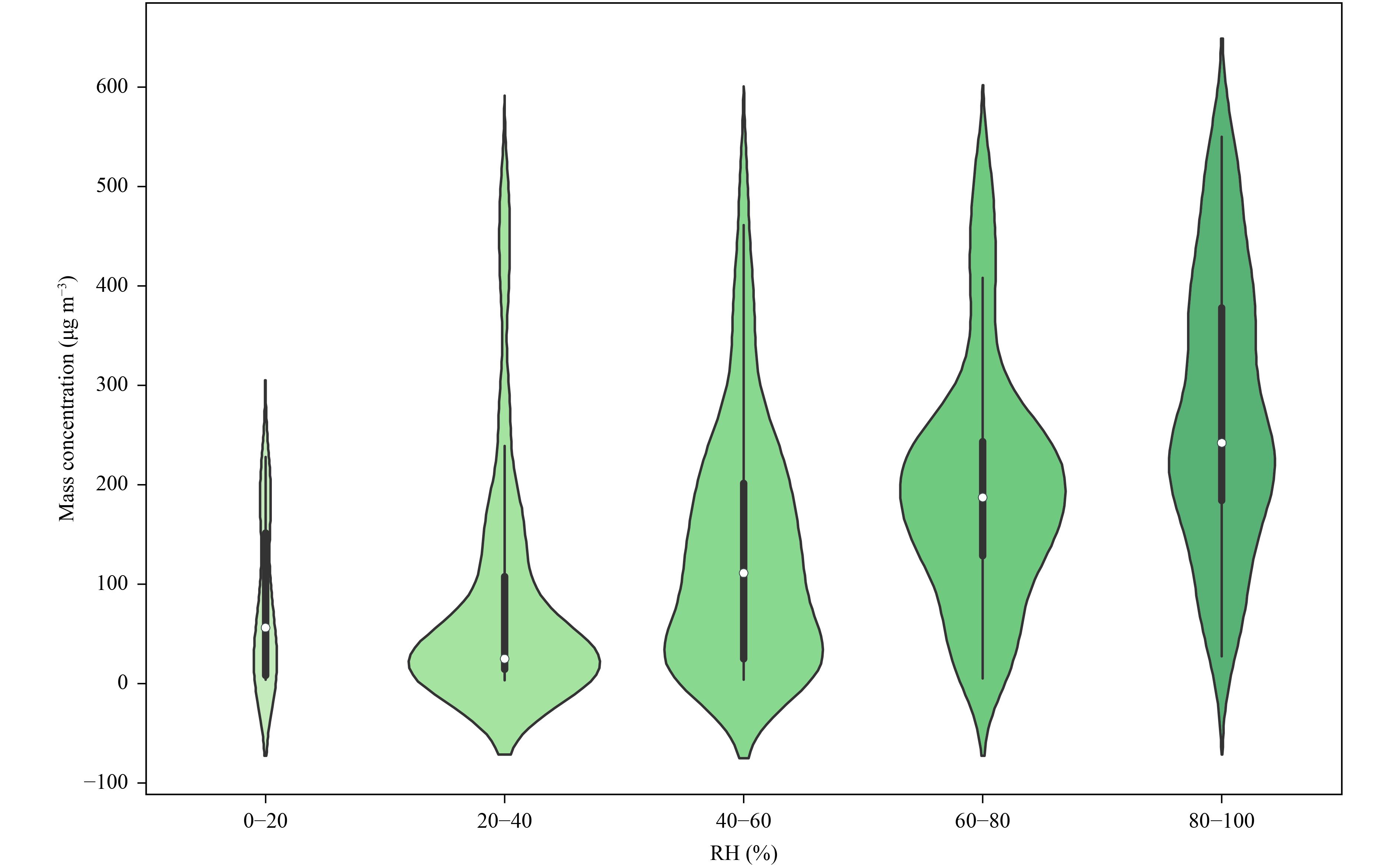
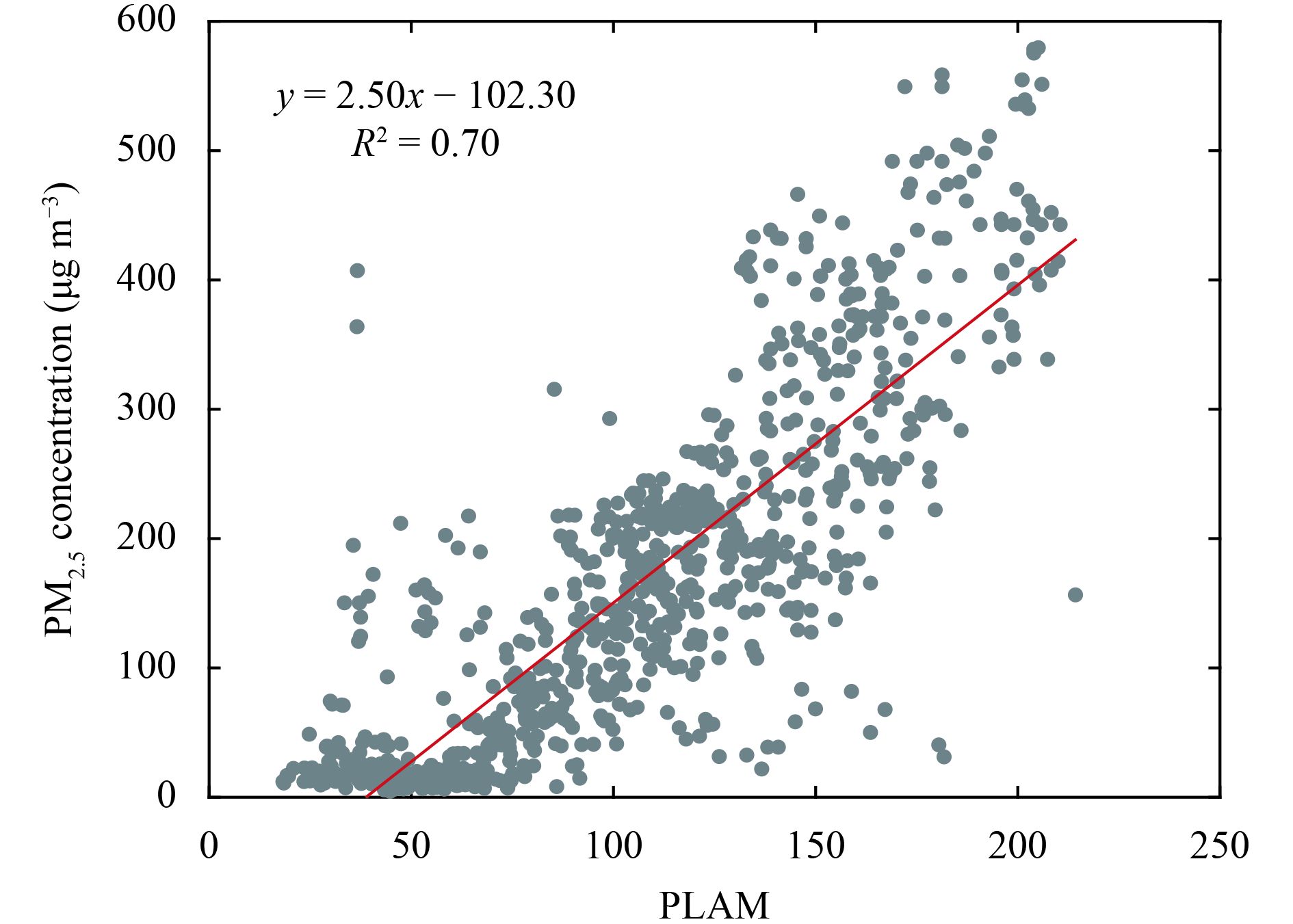
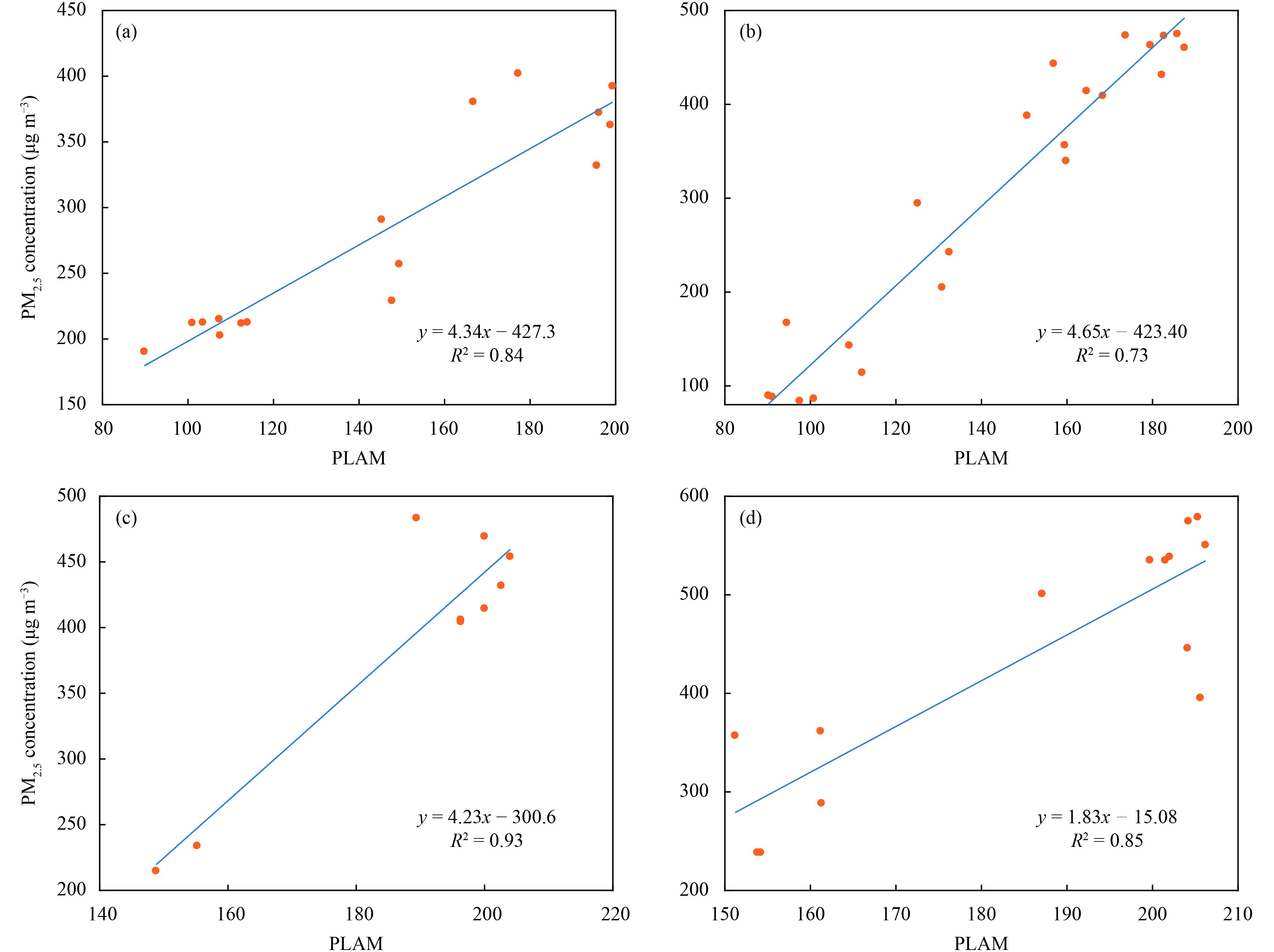
 Download:
Download:











